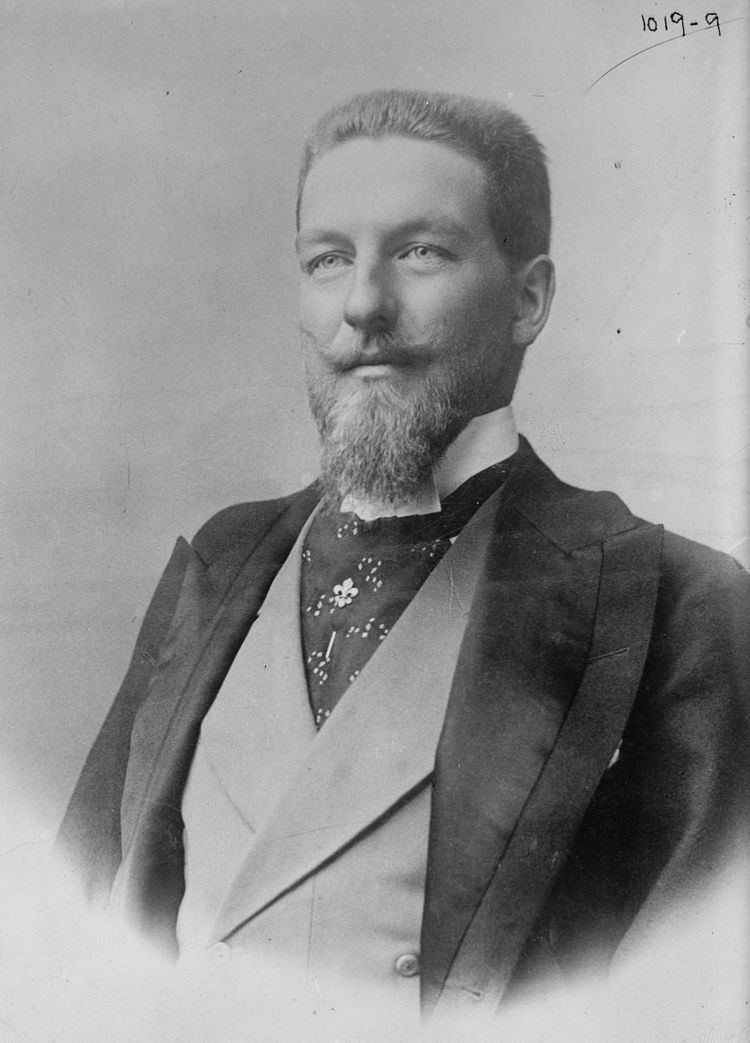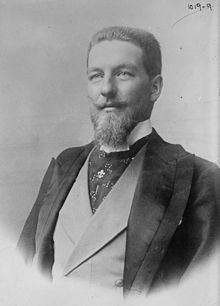Predecessor Philippe VII Predecessor Louis-Philippe II Role 1869–1926 | Successor Jean III Name Prince Duke Children Philippe Debien | |
 | ||
Pretender 8 September 1894 – 28 March 1926 Tenure 8 September 1894 – 28 March 1926 Tenure 8 September 1894 – 28 March 1926 Died March 28, 1926, Palermo, Italy Spouse Archduchess Maria Dorothea of Austria (m. 1896–1914) Books Hunters and Hunting in the Arctic Parents Princess Marie Isabelle of Orleans, Prince Philippe, Count of Paris Similar People Prince Philippe - Count of, Princess Marie Isabelle o, Archduchess Maria Dorothea, Prince Jean - Duke of Guise, Antoine - Duke of Montpensier | ||
Prince philippe duke of orl ans 1869 1926
Prince Philippe d'Orléans, Duke of Orléans (6 February 1869 – 28 March 1926) was the Orléanist claimant to the throne of France from 1894 to 1926.
Contents
- Prince philippe duke of orl ans 1869 1926
- Early life
- Military career
- Claimant to the throne
- Publications
- References
Early life

Philippe was born at York House, Twickenham, Middlesex, the son of Philippe, Count of Paris, by his wife (and first cousin), Princess Isabelle of Orléans. His family lived in The United Kingdom from the abdication and banishment of his great-grandfather Louis Philippe, King of the French, in 1848; returned to France in 1871 following the fall of the Second French Empire; and again found themselves exiled by the French Republic following the 1886 wedding in Paris of Philippe's sister Amélie of Orléans to Crown Prince Carlos of Portugal, taking refuge in the United Kingdom once again. He was baptised with the names Louis-Philippe-Robert, and was called Philippe.
In 1871, Philippe returned with his parents to France. He was educated at home at the Château d'Eu and at the Collège Stanislas de Paris. His preceptor from the end of 1882 to 1887 was Théodore Froment, previously a professor of Latin literature at Bordeaux. In 1880 he received the title Duc d'Orléans from his father. On 16 June 1881, he received the sacrament of confirmation at Eu. Growing up to be tall, blond and bearded, he was a better athlete than scholar, who learned to love mountain-climbing from Captain Morhain, a former soldier from Saint-Cyr who had become his father's accountant.
Military career
Philippe began his military education at the École spéciale militaire de Saint-Cyr. In June 1886 he was on the point of becoming an officer in the French army when his family was once again exiled by France's republican government. At first he was placed under the tutelage of a Colonel de Parseval, under whose supervision he would later attend a military academy in Lausanne. In the United Kingdom he entered the Royal Military College, Sandhurst, on the nomination of Queen Victoria in February 1887, completing his training there having developed an abiding interest in geography, topography, and the natural sciences.
He was attached for service to the King's Royal Rifle Corps which was then serving in India. He never held an actual commission in the British Army, in order to respect a French law forbidding a Frenchman from holding a commission in a foreign army without the permission of the head of state. He took rank as a sub-lieutenant and served in India from January 1888 to March 1889. He was a staff-officer to Lord Roberts, then Commander-in-Chief in India.
In October 1889, Philippe went to Switzerland to complete a course in military theory. There he fathered a son, Philippe Debien, by Nina, an actress working in the casino at Lausanne. On his 21st birthday in February 1890 he left Switzerland by train with his friend the Duc de Luynes and entered Paris in violation of the law of exile of 1886. There, he offered to perform his military service, as required by law. Instead he was arrested and confined in the Conciergerie. He was sentenced to two years in prison at Clairvaux, but was released after a few months and expelled back to Switzerland.
Drawn to explore the "unknown", he asked Britain's military chief, Prince George, Duke of Cambridge, to send him to a military post in the Himalayas. While in the East, he undertook a hunting and exploratory expedition in Nepal with his cousin, Prince Henri of Orléans, went mountain-climbing in Tibet, and visited Afghanistan, Ceylon, and the Persian Gulf before being posted back to the United Kingdom.
Prior to his imprisonment in France, Philippe had been unofficially engaged to his first-cousin Princess Marguerite of Orléans. The engagement was cancelled when Philippe's involvement with the Australian opera singer Nellie Melba was revealed. Although they had lived apart for some years, Melba was still married to Charles Nesbitt Armstrong. Armstrong filed for divorce from Melba on the grounds of adultery, naming Philippe as co-respondent; the case was eventually dropped.
In September 1890, Philippe accompanied his father on a two-month trip to the United States and Canada. They visited the battlefields of the Civil War, in which his father had fought, as well as Philadelphia, Washington, D.C., Richmond, Virginia, New York City, and Quebec.
On November 12, 1890, while in Philadelphia, Philippe joined the Pennsylvania Commandery of the Military Order of the Loyal Legion of the United States (MOLLUS) - a military society composed of officers who had served the Union in the American Civil War and their descendants, as a companion of the 2nd class - a membership category for the eldest sons of companions of the 1st class who were veteran officers. He was assigned MOLLUS insignia number 8262. Upon his father's death on September 8, 1894, he became a hereditary companion of the 1st class.
In December 1890, Philippe applied unsuccessfully to serve in the Russian Army. In March 1893, he was elected a Fellow of the Royal Geographical Society.
In March 1894, Philippe went to Egypt and Palestine with his sister Hélène, Duchess of Aosta. Then he went lion shooting in Abyssinia (modern Ethiopia). In May 1894, he was attached to the Royal Buckinghamshire Hussars, a yeomanry regiment.
Claimant to the throne
Upon the death of his father on 8 September 1894, Philippe became the Orléanist claimant to the French throne. He was known to monarchists as Philippe VIII. He was an active claimant, regularly issuing manifestos and awarding orders of chivalry. In October 1895, Philippe was named as co-respondent in the divorce case of Woolston v. Woolston.
On 5 November 1896, in Vienna, Austria, Philippe married Archduchess Maria Dorothea of Austria (1867–1932), a daughter of Archduke Joseph Karl of Austria, Palatine of Hungary, and granddaughter of Princess Clémentine of Orléans, as well as a niece of Marie Henriette of Austria, Queen Consort of the Belgians. There were no children from this marriage. The couple were poorly matched; after several years they lived apart.
While travelling in Geneva in 1898, Philippe narrowly missed being assassinated by an anarchist,[1] who vowed to kill the next member of a royal family that he saw. The victim would be the Empress Elisabeth of Austria, stabbed to death on the quayside.
Philippe continued to reside in England until 1900, when he moved his primary residence to Belgium. He was an active yachtsman and explored parts of the western coast of Greenland in 1905. In 1907 he sailed in the Kara Sea north of Siberia, and in 1909 went even further north into the Arctic Ocean.
In 1914, Philippe and his wife Maria Dorothea were legally separated. She subsequently lived in Hungary.
At the outbreak of the First World War, Philippe again tried unsuccessfully to join the French Army. He was also refused permission to serve in the Belgian Army and instead returned to the United Kingdom. A plan to join the Italian Army was prevented by a serious accident in which he was knocked down by a bus.
In 1926, Philippe died of pneumonia at the Palais d'Orléans in Palermo, Sicily. Having no legitimate issue, he was succeeded as pretender to the throne of France by his cousin and brother-in-law Jean, Duke of Guise.
Publications
Philippe wrote a number of works based on his many travels:
He also published a collection of the papers of his father and of the Henri, comte de Chambord:
